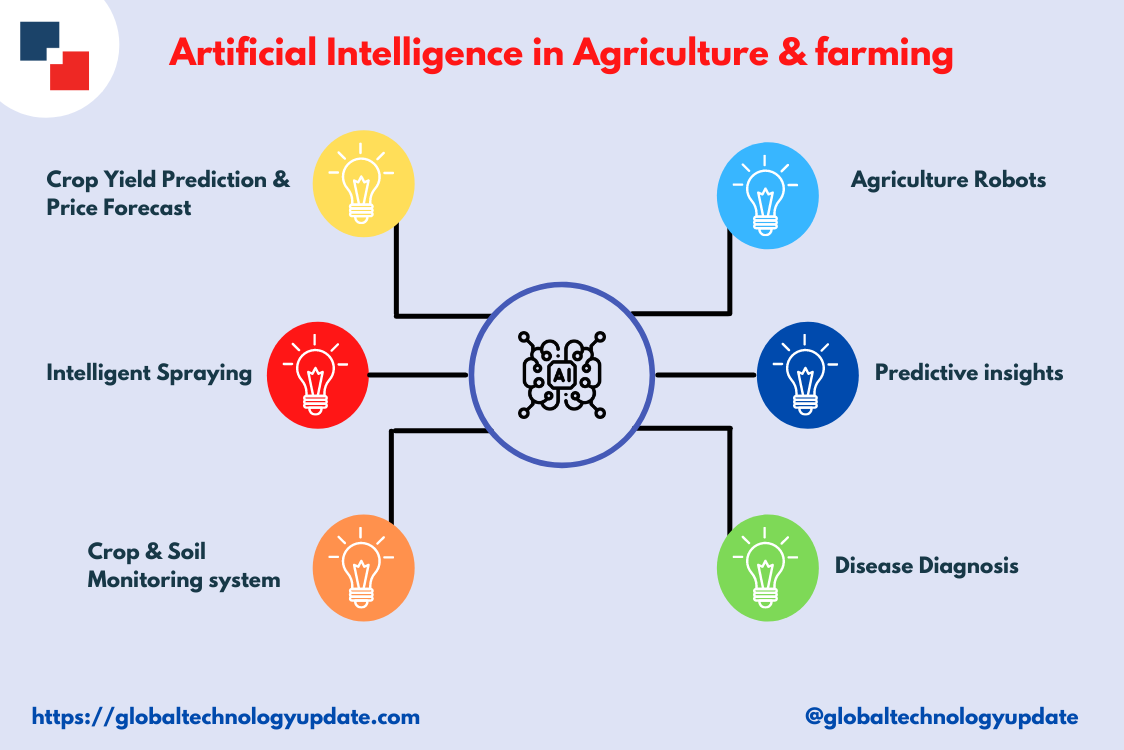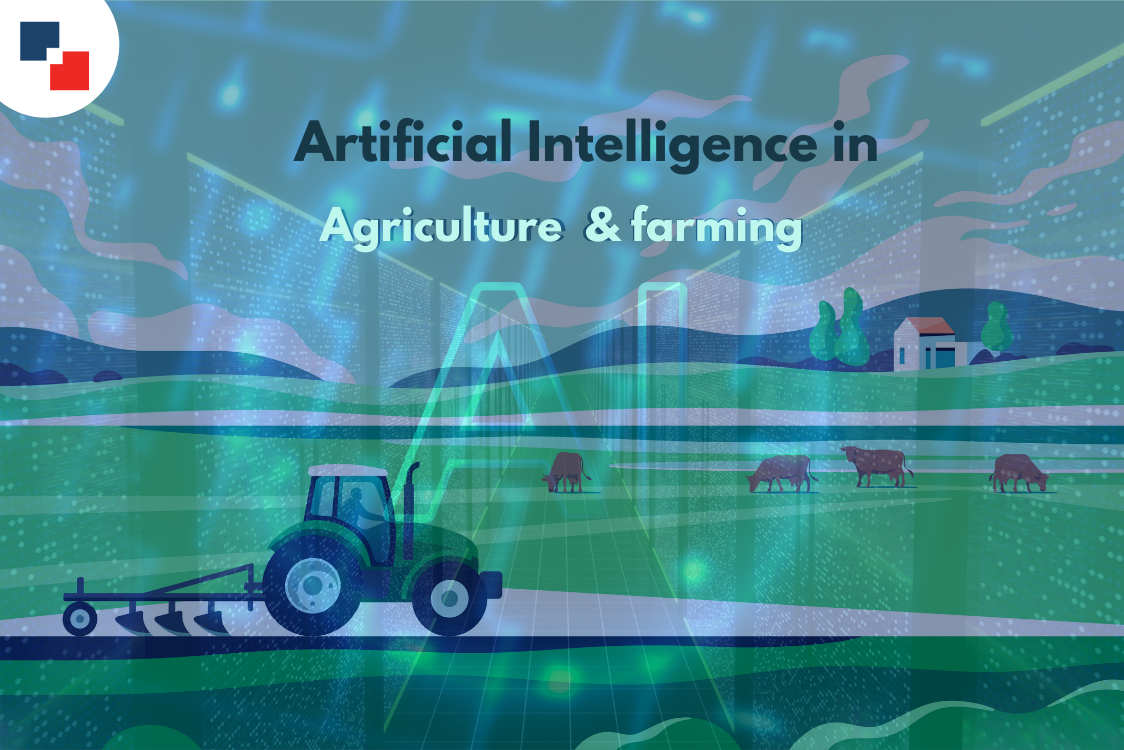Artificial intelligence (AI) has been a part of our lives for far longer than many of us realize. Now AI will be a part of Agriculture. Farming has been transformed by technology over the years, and technical advancements have impacted the agriculture industry in a variety of ways. Let’s see how AI is Transforming the Agriculture industry.
Agriculture is vital to the economy. Agriculture automation is a major concern and a rapidly developing concern around the world. The world’s population is constantly growing, and with it comes increased demand for food and work.
The traditional methods utilized by farmers were insufficient to meet these demands. As a result, new automated procedures were developed. These new methods met food demands while simultaneously providing work opportunities for billions of people.
AI has entered a new phase in agriculture. This technology has protected crop yields against a variety of conditions such as climate change, population increase, job troubles, and food security concerns. These technologies reduce the use of water, pesticides, and herbicides, while also preserving soil fertility. They also aid in the efficient use of labor, increasing production and quality.
It is assisting various industries in increasing efficiency and output. AI in agriculture is assisting farmers in reducing negative environmental consequences and increasing efficiency. The agriculture business has adopted AI to improve overall results.
AI Technology has the power to change the way people think about agriculture by allowing farmers to obtain higher results with less effort while also offering numerous other benefits. However, AI is not a self-contained technology. AI can enhance currently established technology as the next step in the transition from traditional to innovative farming.
AI Transforming the Future of Farming
These approaches are widely utilized in agricultural, food, and bio-system engineering to optimize production and operation processes, as well as to tackle several challenges in the farming business.
-
Robot for Fruit Picking
The robot can pick the same quantity of fruits as 30 human employees in a single day. The robot is fitted with camera systems that can do image recognition on the fruits in order to determine whether they are ready to be picked.
-
Crop analysis using drone and satellite imagery
Consider a drone flying above crops and capturing the entire field. It generates a complete report by evaluating the pictures. This report indicates whether or not the plants have been infected with the disease and whether or not herbicide is required.
Some companies are doing this by scanning 50 acres of fields in 24 minutes and producing a 95 percent accurate health assessment, while others are accomplishing the same thing by integrating drone and satellite imagery.
-
Weed identification and elimination
The tractor sweeps the fields, and the camera’s onboard computer system runs deep learning algorithms that can identify weeds and spray herbicide where it’s needed.
This method involves mounting a camera system on the back of a tractor and using only 10% of the herbicides that would have been used if the standard way of spraying the entire field with herbicide had been employed.
-
Weather forecasting in real-time
Weather events are responsible for 90% of crop losses. And 25 percent of those losses could have been avoided with the use of weather forecasting software. Crop output is influenced by a variety of factors including temperature, rain, humidity, and solar radiation.
AI can be used to aggregate data from satellites, on-ground sensors, and weather stations to provide improved weather forecasts and advise farmers on when to plant and harvest their crops.
-
Defects in soil
It indicates the sorts of bacteria present in the soil by evaluating a soil sample. Based on this information, specialists can indicate which fertilizers should be used to improve the soil’s quality and whether the soil has any flaws that need to be addressed.
How to Apply AI in Agriculture to Solve Farming Challenges?
Agriculture includes a variety of processes and phases, the majority of which are performed manually. This Technology can help with the most complex and routine jobs by supplementing existing technology. When integrated with other technology, it can gather and evaluate massive data on a digital platform, determine the best course of action, and even initiate that action.

AI helps people make smarter decisions
Predictive analytics has the potential to be a game-changer. With AI, farmers can collect and interpret substantially more data and do it much faster than they could without it. Farmers may use AI to handle critical difficulties including analyzing market demand, projecting pricing, and calculating the best time to plant and harvest.
Also, acquire information on soil health, make fertilizer recommendations, track weather, and track the readiness of crops. All of this helps farmers make better judgments at every step of crop development.
Artificial intelligence reduces costs
Precision agriculture is a farm management technique that can help farmers grow more crops with fewer resources. These techniques aided by artificial intelligence (AI) could be the next big thing in agriculture. It also, combines the greatest soil management techniques, variable rate technologies, and data management strategies to assist farmers in increasing yields while reducing costs.
Farmers can use AI to get real-time insights into their fields, allowing them to spot areas that require irrigation, fertilizer, or pesticide application. In addition, novel farming techniques such as vertical agriculture may assist in improving food output while reducing resource consumption. As a result, herbicide use is reduced, harvest quality is improved, earnings are increased, and significant cost savings are realized.
Artificial intelligence handles labor shortages
Agricultural work is difficult, and labor shortages are nothing new in this business. With the use of automation, farmers can address this problem. Farmers can save money by using driverless tractors, smart irrigation and fertilization systems, smart spraying, vertical farming software, and AI-based harvesting robots. AI-driven farm tools are faster, tougher, and more accurate than any human farm worker.
How AI interact with other technologies
Other technologies, such as large data, sensors, and software, are required for AI to function. Similarly, AI is required for the proper operation of other technologies. In the case of huge data, for example, the data isn’t especially valuable. What matters is how it’s processed and whether or not it’s useful.
Big data for making well-informed decisions
Farmers can acquire credible recommendations based on well-sorted real-time information on crop demands by combining AI and big data. As a result, guessing will be eliminated, allowing for more exact farming methods such as irrigation, fertilization, crop protection, and harvesting.
IoT sensors for data collection and analysis
Farmers may acquire more accurate information faster by combining AI agricultural technologies with IoT sensors and software. Better data equals better judgments and less trial and error time and money.
Robotics and automation to reduce manual labor
One of the most common challenges in farming is a manpower shortage, which can be solved with artificial intelligence, autonomous tractors, and the Internet of Things. Because these technologies are more accurate and eliminate errors, they have the potential to be cost-effective. AI, autonomous tractors, and the Internet of Things, when combined, are the key to precision agriculture.
AI in Agriculture: The Future
Because most cutting-edge technology is only employed on large, well-connected farms, the future of AI in agriculture will require a major effort on universal access. Machine learning, automated agricultural products, and data science in farming will have a bright future if their reach and connectivity are extended to even tiny farms in distant locations throughout the world.
Summary
It’s eye-opening to watch how artificial intelligence is securing future food security. AI can be useful and effective in the agriculture sector since it maximizes resource efficiency and alleviates resource and labor scarcity to a considerable extent. Artificial intelligence could lead to a technological revolution and a boom in agriculture, helping to feed the world’s growing population.




